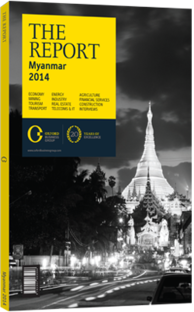Golden land: Exploring the country’s many treasures
Myanmar’s very name is evocative for many, conjuring images of an exotic land of famous golden pagodas, teeming jungles, rolling mountains, pristine tropical beaches, longyi-wearing monks and traditional cities with wooden shophouses and busy markets. Now more and more foreign visitors are able to come and see this storied country for themselves – and they are finding that Myanmar remains one of the few destinations that lives up to its image in the popular imagination.
Looking Beyond
As the country has opened up to tourism, visitors are travelling beyond the traditional centres of Yangon and Mandalay. As a result, tourism is playing an increasingly important role in development, with upcountry areas benefitting from a growing flow of foreigners – and Burmese – staying in hotels, visiting local sites, and using restaurants, shops and other services.
Nonetheless, Yangon remains the main entry point for the majority of visitors – as well as one of the most interesting destinations in the region in its own right. The city shows the influences of Chinese, Indian and British cultural presence, but is resolutely Burmese. Its stand-out attraction is the Shwedagon Pagoda, also known as the golden or great dragon pagoda, which is the most important religious site in the country. Historians disagree over its age – anywhere between 1000 and 2400 years, and the site by legend has been sacred since the beginning of time – but it is certainly unique, even in this temple-filled land. The substantial complex is, as its nickname suggests, dotted with golden monuments and shrines. Beyond Shwedagon, Yangon has a variety of other temples, museums and parks, though many feel that it is the city’s street life that is most appealing, as well as its burgeoning restaurant scene, which has been stimulated by the new influx of tourists.
The Bagan “temple route” has emerged as one of the country’s leading attractions outside Yangon. Located near Mandalay, it has the largest, most densely-clustered collection of Buddhist religious structures in the world. The view of Bagan’s temples and stupas rising from the jungle, with a backdrop of barren mountains, has become one of the defining images of Myanmar, and one of its most obvious tourism marketing tools.
Mandalay itself today is the economic and transportation centre of upper Myanmar. Its main sights are the Royal Palace and the Maha Myat Muni Paya temple, a remarkable building including a 4-metre-high gold statue of Buddha encrusted with precious stones.
Mandalay is also a centre for exploring the rest of the region. The Orient-Express company offers luxury river cruises from the city deep into upcountry areas.
Adventures
Inle Lake, south-east of Mandalay in Shan State, completes what could be called Myanmar’s “big four” attractions. The lake is famous for its population of tribal people and their handicrafts, as well as its great natural beauty. As well as boat trips on the lake, hiking in the hills is a popular activity, making Inle one of the regions which is developing adventure tourism.
Other areas that are opening up to the more adventurous traveller include Rakhine or Arakan Mountains in the west, and Hsipaw, accessible by a beautiful train ride from Mandalay and set in countryside defined by the Dokhtawady River, rice paddies and rolling hills.
Also to the east of Mandalay, the “hill station” of Pyin Oo Lwin offers a taste of colonial-era Burma.
Unfortunately, unrest makes parts of northern Shan State in the north-east of the country difficult for tourists to visit, as the government acknowledges, but if stability returns, this mountainous area with large tribal populations will potentially be one of the most interesting destinations for cultural and adventure tourism.
Myanmar also has some world-class beaches that are attracting international resort developers. Perhaps foremost among them is Ngapali Beach in Rakhine State. In 2013 the Ministry of Hotels and Tourism issued a statement calling for foreign investment in the area.
Less visited is the Mergui Archipelago in the far south of the country, which was completely closed to tourism until 1996. However, curbs on visitors have been lowered recently, and Mergui is now becoming increasingly popular with international sailors and yachters.
You have reached the limit of premium articles you can view for free.
Choose from the options below to purchase print or digital editions of our Reports. You can also purchase a website subscription giving you unlimited access to all of our Reports online for 12 months.
If you have already purchased this Report or have a website subscription, please login to continue.

